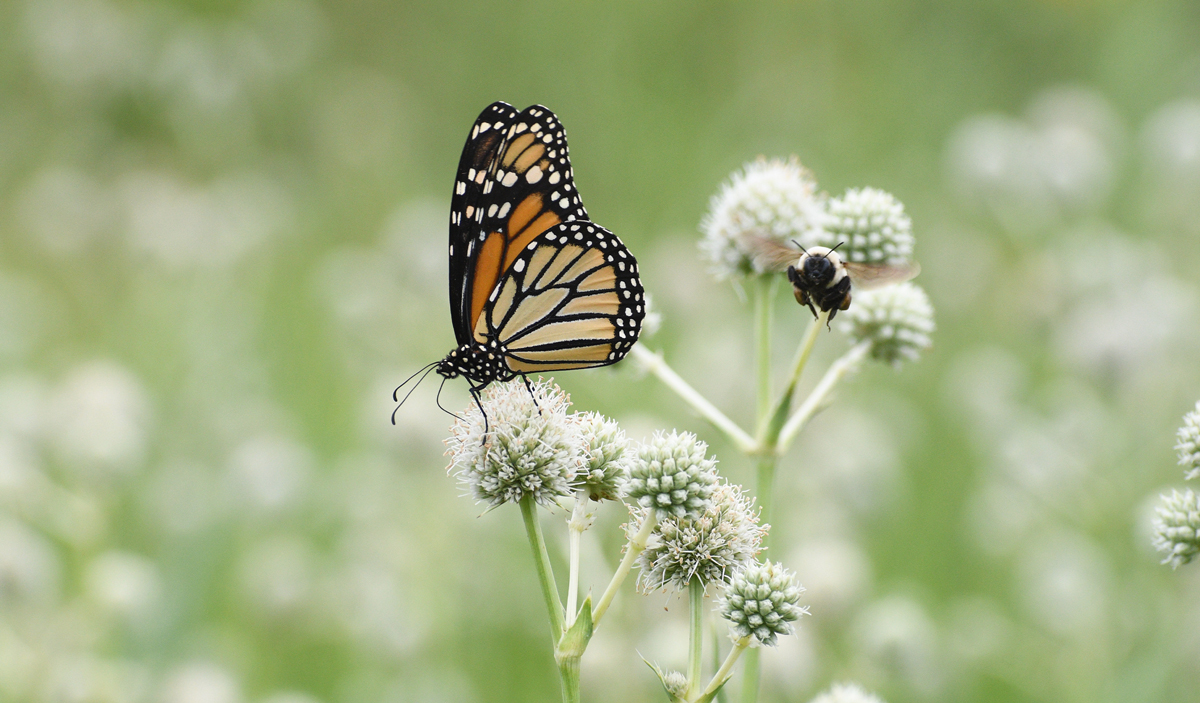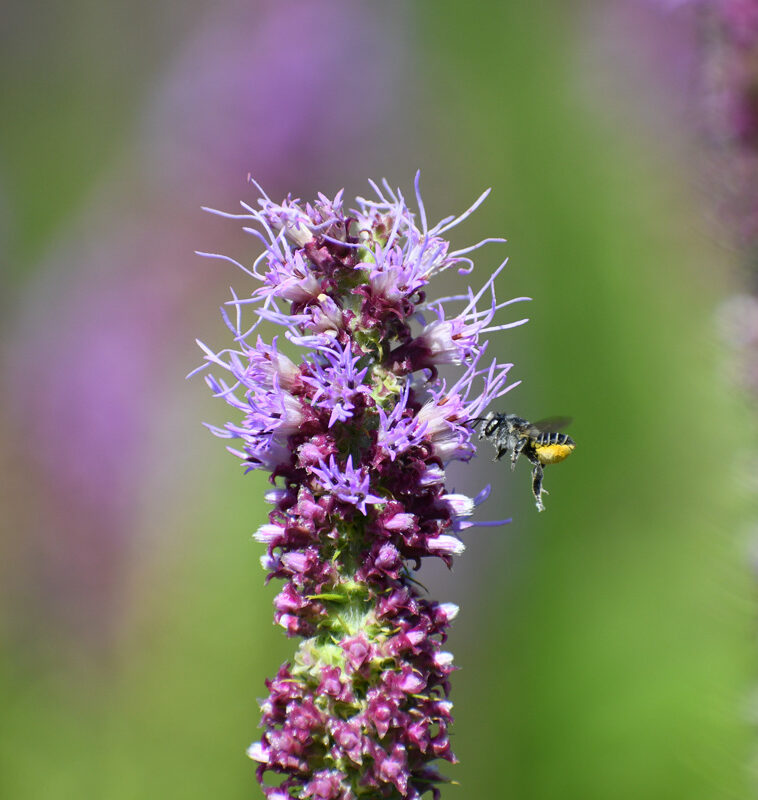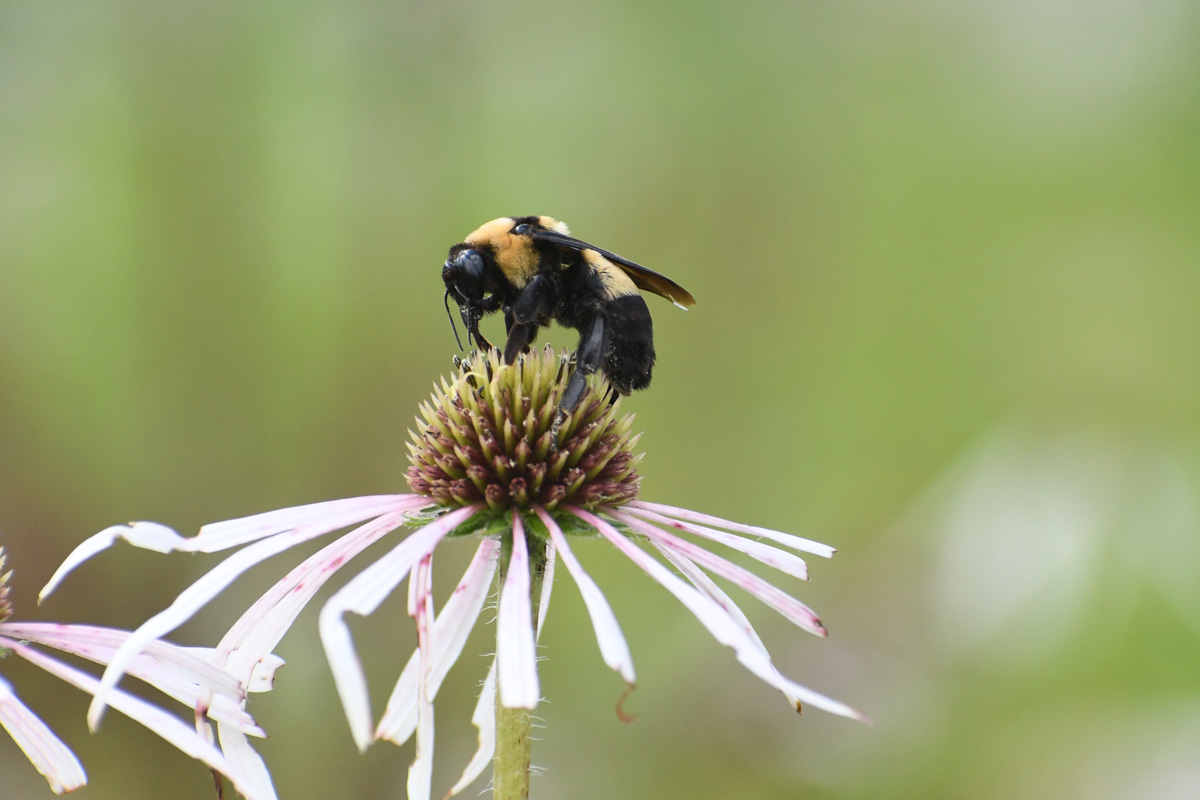All Hands on Deck
Arkansas Monarch Conservation Partnership Is dedicated to creating native pollinator habitats, and you can help.
By Eileen Beard | Photography By Leslie Cooper

The AMCP is leading the charge to preserve vital habitats for native bees and monarch butterflies in The Natural State.
Once upon a time, honey bees were in crisis. In an effort to save them, backyard beekeeping exploded in popularity and our local markets began to flood with sweet stuff for our tea and homemade lip balm. There’s just one problem with these beloved bugs: There are over 4,000 bee species native to North America but the Western honey bee, the most common species found in North America, actually hails from Europe. Unlike honey bees, many native pollinators can only access nectar from certain native plants and some native plants, can only benefit from native pollinators.
The purpose of the Arkansas Monarch Conservation Partnership (AMCP) is to facilitate and coordinate efforts to protect native pollinators. “We focus on creating diverse native habitats that support a robust monarch population and also benefit our native bee population, which are in very big trouble,” said Leslie Cooper, the monarch and pollinator coordinator for the AMCP.
Why is the native bee population declining? For starters, invasive species, urban development and widespread herbicide and pesticide use have damaged habitats. “A National Journal article called the problem ‘death by a thousand cuts,’” Cooper said. “There is no single answer we can point to but the greatest thing we have any control over is habitat creation and maintenance.
“In Arkansas, experts estimate we have between 400 and 650 species of native bees.” One of the AMCP’s goals is to monitor and determine the exact number of Arkansas bees to better conserve their habitats, but unlike honey bees, 90% of bees native to North America are solitary and therefore very hard to track.
Take the Norton’s Nomia (Nomia nortoni) bee, for example. This solitary ground nesting bee is one of the most distinctive and recognizable bees in Arkansas, but most people have never heard of it. Norton’s Nomia feed on native plants like sunflowers, which rely on the insects to carry pollen from flower to flower until fields are crowded with them.
Generalist pollinators like Norton’s Nomia and honey bees can forage on many different plant species, but specialist pollinators depend on specific types of plants to survive. Arkansas is home to a rare long-horned bee species (Tetraloniella albata) that only feeds on purple prairie clover. Monarch caterpillars feed solely on native milkweeds. “The greater diversity of native plants we can grow, the more pollinators we can support,” Cooper said.

“One in three bites of food can be attributed to pollinators.”
—Leslie Cooper
It’s not merely altruistic, it’s practical. “One in three bites of food can be attributed to pollinators,” Cooper said. Consider a diet staple like tomatoes, which are pollinated by bees. It’s an oversimplification, but: No pollinators? No pasta.
Partnering with state and federal agencies, academics and landowners, the AMCP connects expertise and resources across the state to support pollinators. Utility companies, for example, control vast tracts of land in the state. The Covey Project is a native restoration project started by the Little Rock Garden Club under the guidance of the AMCP and other conservationists to plant wildflower seeds across several acres owned by Central Arkansas Water. Similarly, the AMCP has teamed up with Lightsource bp to create a five-acre native pollinator habitat at its utility-scale solar farm in Conway.
On a smaller scale, the AMCP has worked with community members to create pollinator habitats in spaces for the public to learn from and enjoy. Keep Little Rock Beautiful and partners have created a new native pollinator garden in Little Rock’s Allsopp Park. “The garden includes an informational sign to demonstrate how native plants can be cultivated in a formal setting to benefit native pollinators,” Cooper said. “The plants come from a local Arkansas native plant vendor.”

AMCP's diligent efforts include tracking the estimated 400 to 650 native bee species in Arkansas to aid in habitat conservation.
It’s not easy being green, but the AMCP offers guidance and support to small and large landowners who want to make a difference. “The most important thing people at home can do is plant a diversity of Arkansas native plants that provide a succession of blooms so that our pollinators have a constant supply of nectar and pollen,” Cooper said. “That’s because different bees forage in different seasons.” And because the majority of bees nest underground, the AMCP advises gardeners not to lay down a weed barrier or mulch in order to keep the ground bare. Larger habitats can be managed with prescribed fire in accordance with local biologists’ guidance.
It’s important not to disturb more than one-third to one-half of large land holdings at a time for overwintering bees. The AMCP supports a national movement coined “Leave the Leaves,” which asks home gardeners not to bag fallen leaves until the temperature exceeds 50 degrees Fahrenheit for more than one week. “Even small efforts can make a big impact,” Cooper said. “Whether people are creating habitat by planting native plants in terracotta pots on their balcony or restoring hundreds of acres on their family farm, they can make a big difference and support a diversity of pollinators by just taking that first step.”
And the honey bees? They’re doing just fine, thank you.
Resources including native plant guides and information about state and federal cost-share programs for landowners can be found at arkansasmonarchs.org.


